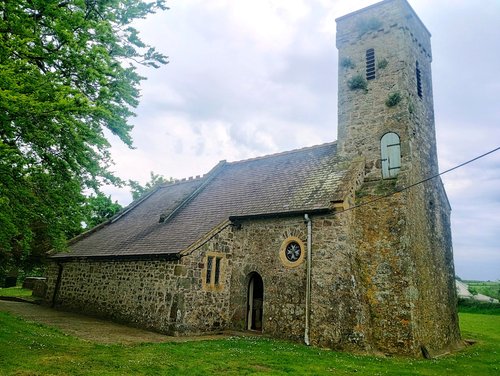Little Gem

St Womar’s Church, Minwear, Pembrokeshire
This little gem is just waiting to be discovered, writes Caroline Evans
With the summer months upon us, the A40 will be hectically busy, despite the improved section opened recently. But console yourself with the thought that nearby there is a small church nestling in a place of quiet and peace, with a rich history, waiting for you to discover it.
South-west of Narberth, and overlooking the Eastern Cleddau River, is the little church of St Womar at Minwear, a Grade II listed church of Norman origins associated with the Commandery of Slebech which, notwithstanding heavy restoration mainly in the 19th century, retains minor vaulting and an interesting font and tower.
![Minwear Font [Erica Eaton]](https://stdavids.contentfiles.net/media/images/Font_Erica_Eaton.width-500.jpg)
![St Womar's, Minwear Interior [Erica Eaton]](https://stdavids.contentfiles.net/media/images/Interior_Erica_Eaton.width-500.jpg)
The church probably dates from the time when it was granted by Robert, son of Lomer, to the Knights Hospitallers of the Order of St John of Jerusalem at Slebech, in 1150. The Order also had an important establishment nearby known as the Sisters' House [only ruins remain]. The church’s low round chancel arch appears to be of Norman date and implies that the church probably consisted originally of nave and chancel. The nave southern doorway also appears to be the original. In 1540 the order was ejected by King Henry VIII under the Dissolution of the Monasteries, sold off to the Barlow family of Slebech, and by 1850 the village had disappeared, leaving just the church and a farming hamlet.
A fraud scandal emerged in the Victorian period when in 1861 Baron de Rutzen of Slebech found himself in trouble with the Bishop of St Davids when it was claimed that in 1844 he was responsible for the unauthorised semi-destruction of the church of St Womar in Minwear - a recently sacked employee bore witness against him. Also in 1843, he had borrowed £600 from the Church Loan Commissioners for a new church at Minwear but spent it building his new church at Slebech [now in ruins]. Clearly peace was restored as the Bishop stayed at Slebech Hall for the consecration of the “new” Church in 1848. The font [pictured] was retrieved from the farmyard.
The story is displayed inside the church on paddles and the light airy interior is a peaceful place for contemplation, far from the warrior knights and their famous battles and their white cross emblazoned cloaks. The church is open to visitors.
Postcode SA67 8BJ;
What3words: airports, scatters, throat.
Information from Revd Robert Moore, Priest in Charge; 07758 370624; robertmoore@cinw.org.uk